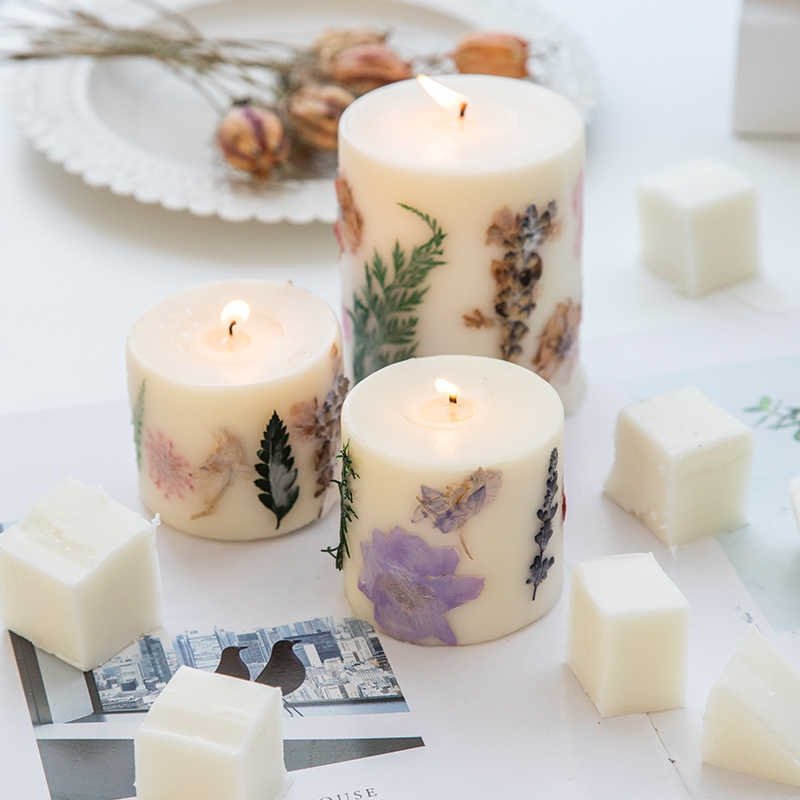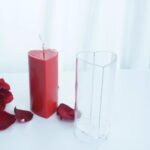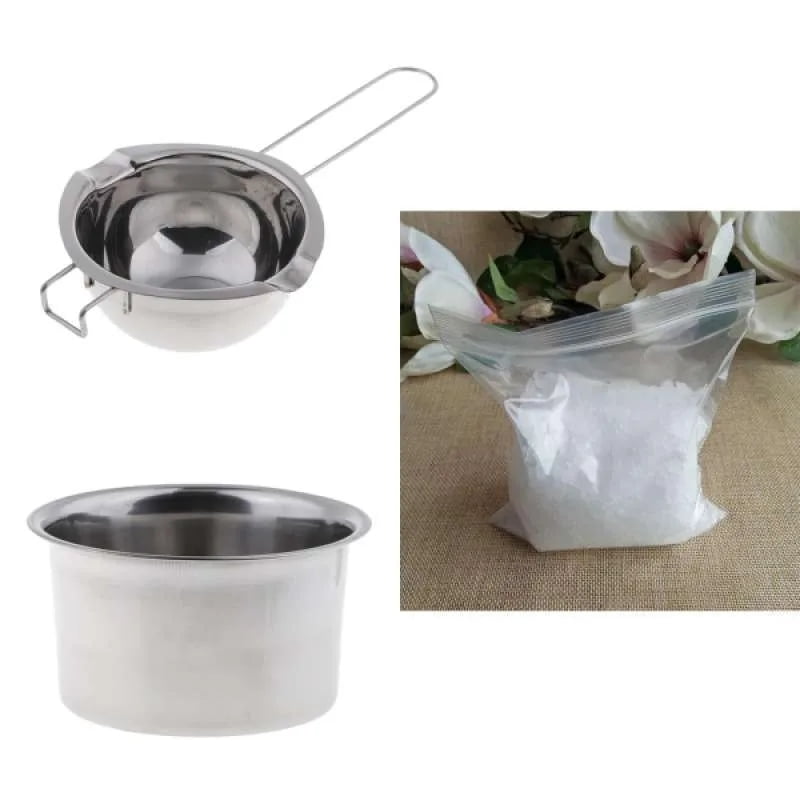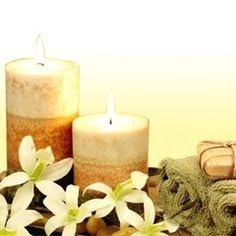Candle making with herbs is an incredibly fun activity that can draw from the wonderful aromas of nature. Candle making with herbs has been around for centuries, and has become an increasingly popular hobby among craft lovers of all ages. Herbs can be used in numerous ways to enhance a handmade candle’s natural scent. From green tea to chamomile, the possibilities are nearly endless.
Adding herbs to your homemade candles is not only a great way to enhance the total scent but also adds a special touch of magic to your candle. You may choose to place herbs such as jasmine or lavender directly into the wax, combine them with fragrance oils, or even wrap the herbs into pieces of fabric that helps infused scents back into the wax and allows it to be released gradually while burning.
Any combination of these techniques will create an entirely unique and beautiful look for your candle while giving it a sensational aroma whenever lit.
The texture and visual appeal of dried herbs provides another exciting way to make your candles stand out from the rest. They can provide tiny bursts of visual color when added throughout the wax layer as well as being placed on top within special designs patterns made out of glitter or extra wax strands after you pour in layers one at a time to create that unique final look.
Making sure everything is distributed evenly will prevent potential hotspots that could result in an uneven burn rate that causes bubbling over if not kept in check during use.
Candle making with herbs offers an unbeatable combination when looking to express yourself through craft-making while capturing mother nature’s beauty and aromas for hours like no other medium can offer. Whether creating something enjoyable for yourself or wanting to give something special as a gift, adding herbal scents to your candles creates beautiful memories that will last throughout time.
Classifying Herbs
Using herbs to make candles is an ancient art that has been used for centuries. Herbs can be used in different ways including as a scent carrier, colorant, or topping for the candles. There are hundreds of types of herbs, each with its own unique set of properties and benefits. Here we will take a look at some of the most commonly used herbs in candle-making and the various ways they can be used.
Types of Herbs Used
Herbs can provide many different fragrances, natural colors, and decoration for candles. Some popular types include lavender, chamomile, rosemary, thyme, eucalyptus, jasmine, sage, mint, patchouli, sandalwood, and peppermint oil. Each has its own unique properties which can provide varying degrees of therapeutic or medicinal effects when burned in the candle making process. For example: Lavender may help reduce stress; chamomile may aid relaxation; peppermint oil can be used to open respiratory passageways; and eucalyptus may help aid breathing when inhaled.
Benefits
Candles made with natural ingredients like herbs provide many health benefits as well as beautiful aesthetics. The natural fragrance oils and waxes from the plants are known aromatherapy agents that when burned can help create a calming environment and provide deeper relaxation while using the product. Additionally these candles often have brighter more vivid colors due to their inherent organic components acting as dyes.
In addition to their scents and dyes, herbs such as rosemary or lavender may have additional therapeutic benefits beyond just scenting your home. For example burning these two herbs near your bed may help you relax before going to sleep or improve your sleep quality after burning them in another room throughout the day.
Also herbal infused candles are free from toxic fumes since they are made from pure plant waxes instead of paraffin wax that is commonly found in store bought candles which releases hazardous gases when burned.
Basics of Candle Making with Herbs
Candle making with herbs is a rewarding and therapeutic craft. Combining candles with the fresh smell of herbs can instantly create a relaxing atmosphere in any home. Herbs are easy to work with and you can incorporate them into many different styles of candle making.
You will need some basic supplies such as wax, wick, essential oils, and decorative items for the outside of the candles. Additionally, there are a variety of herb options for adding unique scents to your creations.
Before starting your candle making project, it’s important to understand the basics of how your ingredients interact together. Waxes tend to be soft at cooler temperatures yet harden up quickly when heated up (this is called its melt point). This process creates the long-lasting hold that makes candles able to burn for longer than other flame-based lighting products.
When selecting which type of wax to use, keep weight at mind and try not to select one too heavy that may cause breakage during shipping or travel. The selected wick should also be suitable for your chosen wax – size matters in regards to keeping the wax fully melted as it’s burning and remaining lit for prolonged periods without struggling out from lack of fuel or oxygen supply.
Finally, because scent is an important factor when selecting a candle, both essential oils and herbs should be included in the final product design – you can combine these components together inside or simply attach them on top (dry) as decoration right before lighting up the wick.
Essential oils provide fragrances which last longer than simple dried herbs due to their molecular structure – they assist in the diffusion process that releases scent into full spaces but won’t overpower like nearly burning strong elements such as incense could do. Additionally, ready-made scent combinations such as lavender & lemon grass mixed together or rosemary & peppermint help create layers of depth when combined with proper spices from an herbal blend selection.
For those looking into creating alternate “moods” through their candles you may also want consider dried flowers, seashells or pieces of wood chips too – all natural found materials offer visual interest just by themselves let alone how they will affect the entire finished product along side being lighted up first.
Step by Step Approach
candle making with herbs is a fun and rewarding activity for both beginners and experienced crafters. Whether you plan on making one single candle or dozens of them for gifts, the steps involved are fairly straightforward. Here’s what you need:
Candle Wax
First and foremost, you’ll need to get your hands on some wax – specifically candle wax. You can get either beeswax or soy wax depending on your preference. Soy is better for people who would like their candles to be vegan-friendly.
Herbs
For those wanting to inject some natural aroma into their candles, they can add different kinds of dried herbs such as lavender, rosemary, sage and chamomile. These herbs have therapeutic scents that evoke a sense of calmness when added to the wax. When preparing the herbs, you must cut them up first into tiny pieces in order for them to mix properly with the wax when melted.
Mold or Containers
The next part of the project will be deciding what kind of mold or container you want to use for your candles. It could be any type of jar, teacup or even multiple small molds if you’re looking to really get creative. Just make sure whatever container you decide to use, it is heatproof so it won’t melt in the heat from melted wax.
Wicks
The last thing you will need before getting started is wicks – these are used as the base which keeps everything together when creating a candle out of wax and herbs. Make sure you purchase wicks that match up with the right size of mold or container that you will be using going forward.
Choosing the Right Herbs and Learning How to Infuse them in Wax
When it comes to making herbal-scented candles, there are many elements to consider. Having the proper understanding of the right types of herbs to use and the method of infusing them in wax are essential for achieving successful results.
Choosing the Right Herbs
When deciding which herbs to use for a candle, there are several things to consider. Perhaps one is looking for an herb that has some special medicinal properties or one that will bring about a specific mood. Since herbs have different scents, it is important to understand their smell as well as how they interact with other fragrances before adding them to a candle.
Additionally, because herbs can easily burn away from heat, certain ones should be used in moderation or avoided altogether if too fragile. Here are some examples of herbal scents and their aroma benefits:
- Lavender – soothing & calming
- Rosemary – fresh & energizing
- Eucalyptus – invigorating & cleansing
- Peppermint – refreshing & uplifting
Infusing Herbs in Wax
Once an individual has selected the desired scent(s) they wish to incorporate into their candle-making process, they must figure out how best to incorporate aromatic effects of each herb into the blend. This starts with choosing the proper temperature at which to melt the wax so that neither the scent nor potency of any given plant is lessened by heat distortion.
This generally requires trial and error until satisfactory results are achieved, however cooler temperatures will give better fragrance retention than higher levels of heating.
Once an appropriate melting temperature is established, then herbs must be added and gently stirred into warm wax using a wooden spoon or other form of stirrer suited for operating near open flame and hot materials. The lid may need opened occasionally during stirring so volatile compounds can escape as too much accumulation could cause discoloration or burning; too little could reduce intensity and smell delivery once finished cooling off.
Additionally herbs can be added after wax is removed from heat source such like thyme or oregano which would lose most its citrus scents during higher temperature melts if include earlier on while melting process was still happening. Finally adding a few drops essential oils chosen specifically complementing original scent profile chosen will critically complete flavor profiles needed take these creations next level aromatherapy offerings.
Crafting Unique Scent Blends
Candle making is a popular art form with a rich history. Many people use herbs to enhance the ambiance of their hand-crafted candles and explore the endless possibilities this craft has to offer. By combining herbs, you can create your own unique scent blends for candle making.
The aromatic properties of herbal essences are not only good for diffusing calming scents in one’s home, but can also be used therapeutically as aromatherapy. For those interested in aromatic healing, adding herbs to candles is an excellent way to spread the benefits of medicinal plants through your space.
Preparing Herbs for Candle Making
Before you begin combining herbs for your candle making project, it’s important to prepare the herbs and plant material you plan on using. If you are using fresh cuttings from a garden or farm, give them time to dry out before incorporating them into your wax blend.
This allows the herb particles to become brittle enough so that they won’t clog up your wick when lit and will ensure maximum diffusion throughout the area where the candle is burning.
You may also use commercially prepared essential oil blends which combine several types of herbal essences into one bottle, allowing versatile mixing opportunities. To blend more individualized scents, consider finding pure essential oils from reliable suppliers so that you can experiment with combining different oils with each other.
Herbal Candle Blending: Creating Using Unique Aromatic Combinations
As we mentioned above, there truly are no limits when it comes to creating unique scent blends for making candles. Essential oils lend themselves perfectly to blending; learning about which essential oils compliment each other is a great approach for experimental mixology if you want something beyond pre-made combinations from manufacturers or stores.
Herbs like lavender and chamomile are naturally calming, while citruses add an invigorating component; these are just some examples of all the possibilities available when you get creative with your fragrance combinations. Just remember that quality ingredients make all the difference – using aroma-grade essential oils ensures that delicate notes will not be overwhelmed by more potent varieties and maintain their presence in your steam-distilled fragrance blends.
A Comprehensive Guide to Making Herb-infused Candles
Making herb-infused candles is a craft that has become increasingly popular in recent years due to its ease and affordability. What many beginners don’t realize, however, is that it takes more than pouring some wax and adding herbs to create beautiful, aromatic candles. Without the proper techniques, tools, and know-how you may end up with less than desired results. This comprehensive guide contains everything you need to know to get started making fabulous herbal candles.
When it comes to supplies for candle making, there are a few basic items needed. The first essential element is choosing your recipe and wicking system. This step involves deciding how many herbs you would like in your candle as well as the type of wick that best fits the wax/herb combination. For beginner recipes we recommend beeswax and essential oil combinations matched with flat braid or zinc core wicks for optimal burning efficiency.
The next step in crafting homemade herbal candles is melting down your wax type of choice. Whether it’s beeswax or paraffin wax, melting must be done safely on stove top in an appropriate melting pot or double boiler over medium heat until completely liquidated while stirring occasionally to prevent hotspots from forming. Afterwards add your selected herbs into heated wax at anytime during the melting process and stir evenly before cooling down completely afterwards.
Once all ingredients are mixed together properly it’s time to start pouring into your desired container or moulds being attentive not to burn yourself with hot mixture at anytime during procedure while wearing appropriate oven mitts at all times.
Strainers will be necessary here for extracting any leftover herbs longer than required length lest they cause issues when trying to trim off afterwards which is also why keeping them out initially helps ensure smooth combustion later on once lit too.
After cooling period has ended; cut excess off carefully using scissors so as not snag onto exposed cords within vessels themselves – Done correctly simply wait patiently until fully solidified one final time before lighting up.
Conclusion
Candle making with herbs is a fun and rewarding way to connect with nature. You can explore the many creative possibilities of combining different colors, smells, textures, and essences in various combinations. With each unique combination, a beautiful candle will come alive that can be used for natural aromatherapy or simply as decorative pieces for any room. The possibilities are truly endless when it comes to customizing your candles according to your individual desires and preferences.
The amazing thing about candle making is that anyone can do it at home without the help of experts. All you need are some basic supplies such as herbs, wax or soywax flakes, containers, wicks, and essential oils. Depending on which materials you choose to use, your candles can have a variety of shapes and sizes.
Additionally, using herbs makes naturally scented candles that will be safe for indoor usage. This makes them perfect gifts for family members or cherished friends who appreciate thoughtful presents made with love.
Making candles with herbs provides an opportunity to tap into the powerful energy of nature while also having fun crafting something useful and beautiful at the same time. Herbs have been used since ancient times both for their beauty but also their medicinal qualities and this DIY project allows us to use them in a modern way by creating lovely candles infused with these healing properties.
Furthermore, you can experiment with adding other ingredients like spices or flower petals giving even more depth to your customized creations.
With the abundance of ideas online along with easily obtainable materials right outside our doorsteps so being able to make herbal-infused candles is within reach no matter where we live. Not only is candle making enjoyable but it’s also an incredibly mindful activity that gives us an opportunity to slow down – taking much needed time away from technology – while providing a sense of relaxation in front of the stovetop watching these crafted pieces take shape.
Candle making with herbs is not just special because they look beautiful but because each has its very own unique energy emanating from all its components bringing forth a positive atmosphere wherever they are placed thus allowing us to embrace the power of nature through simple DIY projects.

Welcome to my candle making blog! In this blog, I will be sharing my tips and tricks for making candles. I will also be sharing some of my favorite recipes.





